- Home
- Ernest Hemingway
A Moveable Feast
A Moveable Feast Read online
"The first thing to say about the 'restored' edition so ably and attractively produced by Patrick and Sean Hemingway is that it does live up to its billing . . . well worth having." --CHRISTOPHER HITCHENS, THE ATLANTIC
PUBLISHED POSTHUMOUSLY IN 1964, A Moveable Feast, Ernest Hemingway's classic memoir of Paris in the 1920s, remains one of his most beloved works. Since Hemingway's personal papers were released in 1979, scholars have examined and debated the changes made to the text before publication. Now this new special restored edition presents the original manuscript as the author intended it to be published.
This volume features a personal foreword by Patrick Hemingway, Ernest's sole surviving son, and an introduction by the editor and grandson of the author, Sean Hemingway. Also included are a number of unfinished, never-before-published sketches revealing experiences that Hemingway had with his son Jack; his first wife, Hadley; F. Scott Fitzgerald; and Ford Madox Ford, as well as insightful recollections of his own early experiments with his craft. This restored edition brilliantly evokes the exuberant mood of Paris after World War I and the unbridled creativity and unquenchable enthusiasm that Hemingway himself epitomized.
Born in Oak Park, Illinois, in 1899, ERNEST HEMINGWAY served in the Red Cross during World War I as an ambulance driver and was severely wounded in Italy. He moved to Paris in 1921, devoted himself to writing fiction, and soon became part of the expatriate community, along with Gertrude Stein, F. Scott Fitzgerald, Ezra Pound, and Ford Madox Ford. He revolutionized American writing with his short, declarative sentences and terse prose. He was awarded the Nobel Prize for Literature in 1954, and his classic novella The Old Man and the Sea won the Pulitzer Prize in 1953. Known for his larger-than-life personality and his passions for bullfighting, fishing, and big-game hunting, he died in Ketchum, Idaho, on July 2, 1961.
MEET THE AUTHORS, WATCH VIDEOS AND MORE AT
SimonandSchuster.com
THE SOURCE FOR READING GROUPS
COVER DESIGN BY CHRISTOPHER LIN * COVER PHOTOGRAPHS: (FRONT) ERNEST HEMINGWAY'S 1923 PASSPORT, ERNEST HEMINGWAY COLLECTION, JOHN F. KENNEDY PRESIDENTIAL LIBRARY AND MUSEUM, BOSTON, MA; (BACK) ERNEST HEMINGWAY IN PARIS, OCTOBER 1959, AT THE AUTEUIL RACETRACK, COLLECTION OF VALERIE HEMINGWAY, PHOTO BY PETER DUFFIELD
BOOKS BY ERNEST HEMINGWAY
Three Stories & Ten Poems In Our Time
The Torrents of Spring
The Sun Also Rises
Men Without Women
A Farewell to Arms
Death in the Afternoon
Winner Take Nothing
Green Hills of Africa
To Have and Have Not
The Fifth Column, and the First Forty-nine Stories For Whom the Bell Tolls
Across the River and Into the Trees The Old Man and the Sea
By-Line: Ernest Hemingway
Islands in the Stream
The Nick Adams Stories
The Dangerous Summer
The Garden of Eden
The Hemingway Reader
The Complete Stories of Ernest Hemingway Ernest Hemingway, Selected Letters, 1917-1961
True at First Light
Hemingway on Fishing
Hemingway on Hunting
Hemingway on War
Thank you for purchasing this Scribner eBook.
Sign up for our newsletter and receive special offers, access to bonus content, and info on the latest new releases and other great eBooks from Scribner and Simon & Schuster.
or visit us online to sign up at
eBookNews.SimonandSchuster.com
SCRIBNER
A Division of Simon & Schuster, Inc.
1230 Avenue of the Americas
New York, NY 10020
www.SimonandSchuster.com
Copyright (c) 1964 by Ernest Hemingway Ltd. Copyright renewed (c) 1992 by John H. Hemingway, Patrick Hemingway, and Gregory Hemingway Restored edition copyright (c) 2009 by the Hemingway Copyright Owners Foreword copyright (c) 2009 by Patrick Hemingway Introduction copyright (c) 2009 by Sean Hemingway
All rights reserved, including the right to reproduce this book or portions thereof in any form whatsoever. For information address Scribner Subsidiary Rights Department, 1230 Avenue of the Americas, New York, NY 10020.
First Scribner trade paperback edition July 2010
SCRIBNER and design are registered trademarks of The Gale Group, Inc., used under license by Simon & Schuster, Inc., the publisher of this work.
The Simon & Schuster Speakers Bureau can bring authors to your live event. For more information or to book an event contact the Simon & Schuster Speakers Bureau at 1-866-248-3049 or visit our website at www.simonspeakers.com.
Text set in Sabon
Library of Congress Control Number: 2009017587
ISBN 978-1-4165-9131-3
ISBN 978-1-4391-8271-0 (pbk)
ISBN 978-0-7432-3729-1 (ebook)
Picture Credits
1, 2 and 9. Family Collection; 3. Collection of Man Ray; 4. Copyright Estate of Sylvia Beach. From the Collection of Sylvia Beach, Paris; 5. Photograph by Gisele Freund, Paris; 6. From the Sylvia Beach Collection, State University of New York at Buffalo; 7. Collection of Man Ray; 8. Courtesy of Mrs. Samuel J. Lanahan
Contents
Foreword by Patrick Hemingway
Acknowledgments
Introduction by Sean Hemingway
Chapter 1: A Good Cafe on the Place St.-Michel
Chapter 2: Miss Stein Instructs
Chapter 3: Shakespeare and Company
Chapter 4: People of the Seine
Chapter 5: A False Spring
Chapter 6: The End of an Avocation
Chapter 7: "Une Generation Perdue"
Chapter 8: Hunger Was Good Discipline
Chapter 9: Ford Madox Ford and the Devil's Disciple
Chapter 10: With Pascin at the Dome
Chapter 11: Ezra Pound and the Measuring Worm
Chapter 12: A Strange Enough Ending
Chapter 13: The Man Who Was Marked for Death
Chapter 14: Evan Shipman at the Lilas
Chapter 15: An Agent of Evil
Chapter 16: Winters in Schruns
Chapter 17: Scott Fitzgerald
Chapter 18: Hawks Do Not Share
Chapter 19: A Matter of Measurements
Part 1: ADDITIONAL PARIS SKETCHES
Chapter 20: Birth of A New School
Chapter 21: Ezra Pound and His Bel Esprit
Chapter 22: On Writing in the First Person
Chapter 23: Secret Pleasures
Chapter 24: A Strange Fight Club
Chapter 25: The Acrid Smell of Lies
Chapter 26: The Education of Mr. Bumby
Chapter 27: Scott and His Parisian Chauffeur
Chapter 28: The Pilot Fish and the Rich
Chapter 29: Nada y Pues Nada
Part 2: FRAGMENTS
APPENDIX I. CONCORDANCE OF ITEM NUMBERS FOR ADDITIONAL PARIS SKETCHES
NOTES
PHOTOGRAPHS
A Farewell to Arms: The Hemingway Library Edition
A MOVEABLE FEAST
THE RESTORED EDITION
FOREWORD
A new generation of Hemingway readers (one hopes there will never be a lost generation!) has the opportunity here to read a published text that is a less edited and more comprehensive version of the original manuscript material the author intended as a memoir of his young, formative years as a writer in Paris; one of his best moveable feasts.
From the very beginning, there have been different editions of important works of literature. Take the Bible, for example. When I was a young person being raised in the Roman Catholic religion of my maternal grandmother, Mary Downey, born in County Cork, I heard it read from the pulpit during sermons
on Sundays and feast days, and I read it myself, the Douay-Rheims Version (DRV) of the Bible, which is not the King James Version (KJV) although the DRV is literally closer more often to the Latin Vulgate Version (LVV).
Consider just the two opening lines:
DRV:
1. In the beginning God created the heaven and the earth.
2. And the earth was without form, and void; and darkness was upon the face of the deep. And the Spirit of God moved upon the face of the waters.
KJV:
1. In the beginning God created heaven, and earth.
2. And the earth was void and empty, and darkness was upon the face of the deep; and the spirit of God moved over the waters.
LVV:
1. in principia creavit deus caelum et terram.
2. terra autem erat inanis et vacua et tenebrae super faciem abyssi et spiritus dei ferebatur super aquas.
After googling all three of these versions, I was left with the distinct impression that I had a choice, because of the ambiguity of the LVV, between the Spirit of God being carried along floating on the stream like a piece of Sargasso seaweed or, alternatively, soaring along just above it like an albatross on the southern seas.
To me, anyway, soaring seems more godlike, and evidently, the Protestant clergymen in charge of the KJV thought the same. Neither the Protestants nor the Catholics could turn to God for answers to such ambiguities, and such is the case with Hemingway. He died before he had decided on a preface, chapter headings, an ending, and a title for his memoir, and no one, just like the case with the old gaucho's mother in Hudson's Far Away And Long Ago, has been able to reach him so far regarding these matters.
Now what can I say about the title? Mary Hemingway derives it from a remark made by her husband to Aaron Hotchner: "If you are lucky enough to have lived in Paris as a young man, then wherever you go for the rest of your life, it stays with you, for Paris is a moveable feast."
When my father was free to marry my mother, Pauline, he agreed to convert to Roman Catholicism and undergo a course of religious instruction in Paris. Hemingway, of course, as a boy had received quite a bit of religious instruction as a properly brought-up Protestant, but he had received the sacrament of last rites from a Catholic chaplain in the battlefield dressing station during the night after his mortar wound on the Italian front, and like the famous French king whose statue he mentions in the Paris memoir, he knew that Pauline was worth a mass.
I imagine that the priest, most likely from Saint-Sulpice, the church where Pauline attended services near her Paris apartment, took his role as instructor very seriously. One of the concepts he must have discussed with my father was that of the moveable feast. He would have explained that these are important church feast days linked to the varying date of Easter, so that they also have varying dates. Hemingway must have remembered then one of the most memorable speeches of Shakespeare, the feast of St. Crispin speech, the Agincourt address to his troops by Henry V. St. Crispin's day is not a moveable feast. It is the same date in the calendar of every year, but if you fought there on that day, it becomes your moveable feast.
The complexity of a moveable feast lies in the calculation of the calendar date for Easter in a given year, from which it is simple enough then to assign a calendar date to each and every moveable feast for a given year. Palm Sunday is seven days before Easter.
The calculation of the calendar date for Easter is no simple matter. This calculation has a special name, the Computus. No less a mathematician than Carl Friedrich Gauss came up with an algorithm for the computation. How those two, instructor and pupil, must have enjoyed themselves with these arcane discussions. I wonder if James Joyce might have joined in!
In later life the idea of a moveable feast for Hemingway became something very much like what King Harry wanted St. Crispin's Feast Day to be for "we happy few": a memory or even a state of being that had become a part of you, a thing that you could have always with you, no matter where you went or how you lived forever after, that you could never lose. An experience first fixed in time and space or a condition like happiness or love could be afterward moved or carried with you wherever you went in space and time. Hemingway had many moveable feasts besides Paris: D-Day on a landing craft going in to Omaha Beach among many others. For this to work, however, you need memory. With memory gone, and knowing that it is gone, is likely to come despair, the sin against the Holy Ghost. Electric shock therapy can destroy memory like dementia or death does, but, unlike dementia or death, you are left aware that it has been destroyed.
Now that I have tried to prepare you for it, here is the last bit of professional writing by my father, the true foreword to A Moveable Feast: "This book contains material from the remises of my memory and of my heart. Even if the one has been tampered with and the other does not exist."
Patrick Hemingway
ACKNOWLEDGMENTS
First, I thank Patrick Hemingway for suggesting the idea of this book to me, entrusting me with the task, and also for his sterling collaboration. It has been a rare privilege to work directly with my grandfather's manuscripts. In its own way, this project has been a moveable feast that I have worked on in many different places over several years. I am most grateful to Michael Katakis, Literary Rights Manager of the Hemingway Foreign Rights Trust, and to Brant Rumble, my editor at Simon & Schuster. At the John F. Kennedy library in Boston, I want to acknowledge the unwavering support of Deborah Leff, the former director, and Tom Putnam, the director, as well as Susan Wrynn, the curator of the Hemingway Collection. Without their kind assistance, this project would not have been undertaken. I am also grateful to James Hill at the audiovisual archives of the Kennedy library for assistance with photographic images and to Peter Duffield for allowing the use of his photograph on the back cover.
The knowledge I have accumulated over the years about my grandfather and his work has come from many sources. For this project, I single out for thanks my parents, Valerie and Gregory Hemingway, as well as Patrick and Carol Hemingway, Jack Hemingway, and George Plimpton. I also thank Joseph and Patricia Czapski, Patrice Czapski, Liisa Kissel, and J. Alexander MacGillivray. In researching this project, I have consulted numerous scholarly studies and remembrances of Paris in the 1920s, some of which are cited in my introduction. In particular, the monograph-length studies of A Moveable Feast by Jacqueline Tavernier-Courbin and Gerry Brenner were most helpful and will remain fundamental references for any future studies of A Moveable Feast. Finally, I want to acknowledge my soul mate and raison d'etre, Colette, who helped in many ways, and Anouk, who came along toward the end of this project, bringing with her understanding and joy.
Introduction
In November 1956, the management of the Ritz Hotel in Paris convinced Ernest Hemingway to repossess two small steamer trunks that he had stored there in March 1928.1 The trunks contained forgotten remnants from his first years in Paris: pages of typed fiction, notebooks of material relating to The Sun Also Rises, books, newspaper clippings, and old clothes. To bring this precious cargo home to the Finca in Cuba on their transatlantic voyage aboard the Ile de France, Ernest and his wife Mary purchased a large Louis Vuitton steamer trunk. I recall as a child seeing that trunk in my godmother Mary's apartment in New York, and I can still remember its smart leather trim with brass fittings, pervasive Louis Vuitton logo, and the gold embossed initials, "EH." The trunk itself was easily big enough for me to fit into, and it filled me with wonder at the grand, adventurous life my grandfather led.
Hemingway may well have had earlier inklings of writing a memoir about his early years in Paris, such as during the long recuperation after his near-death plane crashes in Africa in 1954, but his reacquaintance with this material--a time capsule from that seminal period in his life--stirred him to action.2 In the summer of 1957, he began work on "The Paris Sketches," as he called the book. He worked on it in Cuba, and in Ketchum, and even brought it with him to Spain in the summer of 1959, and to Paris in the fall that same year. By Novem
ber 1959, Hemingway had completed and delivered to Scribner's a draft of a manuscript that lacked only an introduction and the final chapter. A Moveable Feast, published posthumously in 1964, concerns the author's time in Paris from 1921 to 1926. Careful study of the manuscripts for A Moveable Feast reveals that relatively little material was reused from Hemingway's early papers and manuscripts.3 Of particular note is the chapter on the poet Cheever Dunning, which can be directly linked to a very early draft of the story that Hemingway describes in a letter to Ezra Pound, dated October 15, 1924.4 Additionally, parts of the chapter "Ford Madox Ford and the Devil's Disciple" were culled from material that Hemingway excised from The Sun Also Rises and had rediscovered in the notebooks he found in the trunks at the Ritz. While A Moveable Feast is the first and most complete posthumously published book by Ernest Hemingway, Mary Hemingway states, in her editor's note, that the book was finished in the spring of 1960, when he had completed another round of edits to the manuscript at the Finca. In actuality, the book was never finished in Hemingway's eyes.
This new special edition of A Moveable Feast celebrates my grandfather's classic memoir of his early days in Paris fifty years after he completed the first draft of the book. Presented here for the first time is Ernest Hemingway's original manuscript text as he had it at the time of his death in 1961. Although Hemingway had completed several drafts of the main text in prior years, he had not written an introduction or final chapter to his satisfaction, nor had he decided on a title. In fact, Hemingway continued to work on the book at least into April of 1961.
During the nearly three years between the author's death and the first publication of A Moveable Feast in the spring of 1964, significant changes were made to the manuscript by the editors, Mary Hemingway and Harry Brague of Scribner's. A small amount of material that Hemingway had intended to include was deleted, and other material that he had written for the book but had decided not to include, notably the chapter entitled "Birth of A New School," a large section of the chapter on Ezra Pound, now entitled "Ezra Pound and the Measuring Worm," and a large section of the final chapter, previously entitled "There is Never Any End to Paris" and now renamed "Winters in Schruns," was added. The introductory letter by Ernest Hemingway in A Moveable Feast was actually fabricated by Mary Hemingway from manuscript fragments and, thus, has been left out of this edition. Likewise, the editors changed the order of some of the chapters. Chapter 7 became chapter 3, and chapter 16 on Schruns was made into the last chapter with additional material added from a chapter in which Hemingway wrote about his break up with Hadley and new marriage to Pauline Pfeiffer, a text published in its entirety here for the first time as "The Pilot Fish and the Rich." Hemingway had decided against including this material in the book because he thought of his relationship with Pauline as a beginning, not an ending.

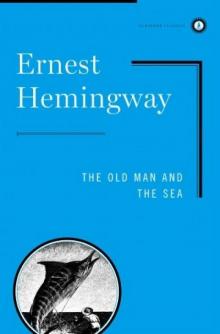 The Old Man and the Sea
The Old Man and the Sea Green Hills of Africa
Green Hills of Africa The Sun Also Rises
The Sun Also Rises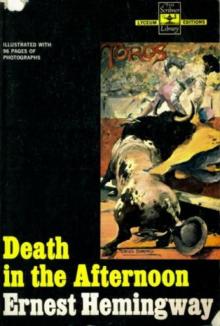 Death in the Afternoon
Death in the Afternoon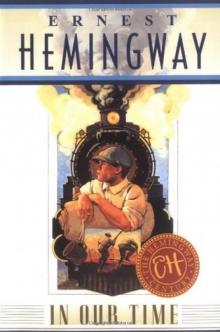 In Our Time
In Our Time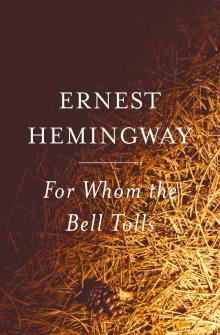 For Whom the Bell Tolls
For Whom the Bell Tolls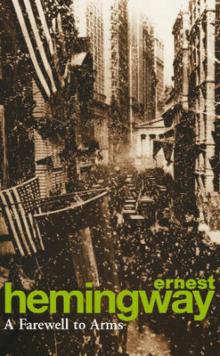 A Farewell to Arms
A Farewell to Arms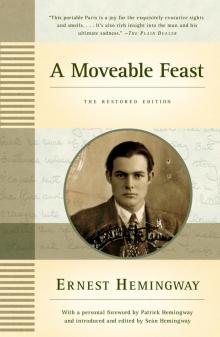 A Moveable Feast
A Moveable Feast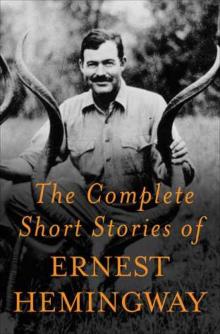 The Complete Short Stories of Ernest Hemingway
The Complete Short Stories of Ernest Hemingway Big Two-Hearted River
Big Two-Hearted River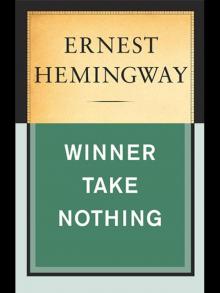 Winner Take Nothing
Winner Take Nothing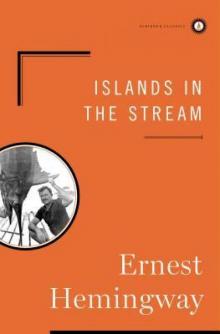 Islands in the Stream
Islands in the Stream To Have and Have Not
To Have and Have Not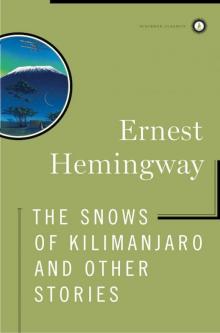 The Snows of Kilimanjaro and Other Stories
The Snows of Kilimanjaro and Other Stories Across the River and Into the Trees
Across the River and Into the Trees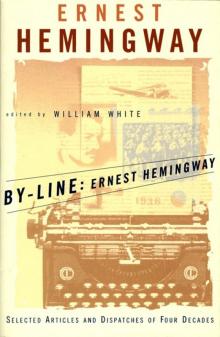 By-Line Ernest Hemingway
By-Line Ernest Hemingway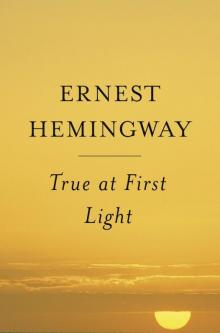 True at First Light
True at First Light Men Without Women
Men Without Women The Nick Adams Stories
The Nick Adams Stories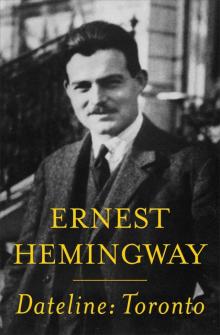 Dateline- Toronto
Dateline- Toronto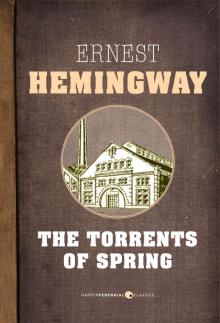 The Torrents of Spring
The Torrents of Spring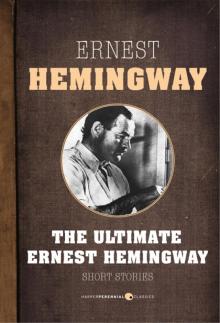 Short Stories
Short Stories